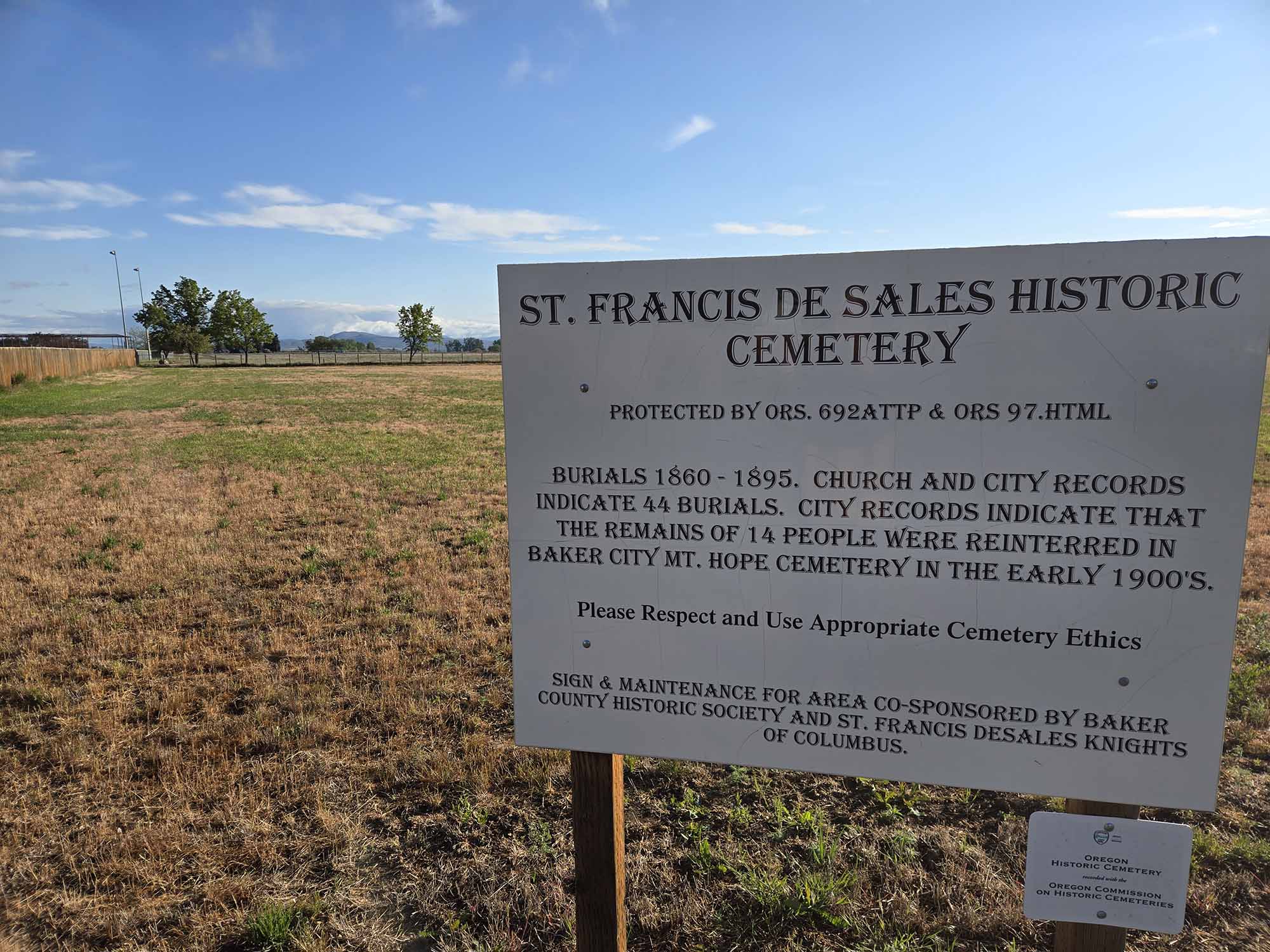Ranchers continue their campaign against juniper
Published 12:00 am Thursday, April 17, 2008

- Mechanical harvesting wreaks havoc on juniper growth on the Foster Ranch in Bowen Valley, a few miles south of Baker City. A demonstration of what an excavator with attached slash buster can do to juniper was presented Tuesday as part of the Baker County Juniper Management Workshop. (Baker City Herald/S. John Collins).
By ED MERRIMAN
Trending
Baker City Herald
For 20 years, the Foster family has been fighting to keep Western juniper trees from taking over their rangeland and causing streams and pastures to dry up.
Like many ranchers across Eastern and Central Oregon, Don Foster, along with his father, Wayne, and brother, Cal, have logged many hours using chain saws to cut down invading juniper trees.
Trending
Don Foster said removing the trees restores streamflows and revives pastures that sustain cattle as well as deer, elk and other wildlife that frequent the family ranch in Bowen Valley a few miles south of Baker City.
On Tuesday, about 60 ranchers, agency representatives and others from Baker County and as far away as Bridgeport, Bend, John Day, Ontario and Kennewick, Wash., gathered for the Baker County Juniper Management Workshop.
The workshop and field trip to the Foster ranch included presentations on juniper management options ranging from prescribed burns and chain saws to mechanical harvesting.
Ed Akers, a retired rancher who makes his living bulldozing juniper trees, said that within 8 hours after he cleared 10 acres of juniper near Kimberly, in Grant County, water was running in a draw that had been dry for years except during winter runoff.
andquot;A fellow who lived in the area said that was the first time he’d seen water in that creek year-round,andquot; Akers said.
While fire is considered the most economical method of controlling juniper, Akers said it’s also the most risky, due to the potential for a fire to spread out of control and damage neighboring property.
Joe Hessel of the Oregon Department of Forestry warned those attending the workshop that burn permits are required for most areas of Baker County for prescribed burns and use of power machinery for juniper management projects.
There’s no charge for the permits, though, Hessel said.
andquot;ODF supports active juniper management removal of invasive juniper,andquot; said Hessel, adding that in most cases, harvesting of Western juniper in units of 120 acres or less is exempt from the Oregon Forest Practices Act.
andquot;You don’t have to do any juniper reforestation,andquot; Hessel said.
However, Hassel said ranchers, woodland owners and others who burn in regulated areas without submitting a burn plan or obtaining a burn permit could find themselves facing as much as $300,000 in firefighting costs and potentially far greater liability in the event a runaway fire scorches neighboring property.
andquot;The permit ensures that reasonable precautions are taken to prevent the spread of fire,andquot; Hessel said.
Arnie Grammon, Baker County Weed Supervisor, cautioned landowners that burning juniper in a manner that eliminates sagebrush and other plants with mid-depth roots could open the door to infestations of noxious weeds, which could be more even detrimental to pasture, as well as more difficult and expensive to eradicate, than juniper.
Mark Jacques of ODF provided information on starting rangeland fire associations in areas not served by existing fire protection districts.
He said one of the primary benefits of forming a rangeland fire protection district is the ability it provides for landowners to band together to attack a fire early.
Hessel said smoke management is becoming a bigger issue in Baker County and other areas, where burn plans are required to include information about weather conditions that would preclude a scheduled juniper-burning project.
At the Foster ranch, participants watched demonstrations of feller-bunchers, stroke-delimbers and other mechanical harvesting equipment the Fosters are trying out on accessible areas of their ranch.
Equipment operators chopped and ground up juniper trees in a whirl of flying wood chips using implements attached to Kobelco excavators and a Kubota tractor/backhoe.
A slash buster attached to a Kobelco excavator operated by Riley Morgan cleared a 60-foot swath of juniper trees 300 yards long in about 20 minutes, but Don Foster said ranchers need to weigh the cost of purchasing, hiring or operating such equipment.
In areas where removing juniper is likely to pay big dividends in terms of increasing grass production and improved soil moisture and water flow, Foster said it may be cost effective to use mechanical timber harvesting equipment.
However, at a cost of $50 to $250 per acre depending on geography, rocky conditions, quantity of juniper trees per acre and other factors, Foster said using mechanical harvesting machines may not pencil out in some situations.
In areas where the cost of mechanically removing junipers exceeds the value of improved grass production and other benefits, Foster said he will continue to use chain saws.
Forest Schroeder, an equipment operator participating in the field trip, said the $50 to $250 per acre fee is reasonable when you consider a slash buster head like the one used at the Foster ranch costs $25,000 to $30,000, and Kobelco excavators range from $100,000 to $200,000.
In describing how the slash buster cuts down juniper trees, Schroeder said, andquot;It’s like a big steel weed eater.andquot;
While juniper management projects can be costly, Stephanie Page of the Oregon Department of Agriculture said tax incentives and grants are available for projects that supplement or replace power or heat from a conventional power plant with a renewable source of energy like juniper trees.
Oregon currently has one ethanol plant in Boardman that produces ethanol from corn, but Page said the state recently approved a permit for a biomass plant designed to use wood pulp, which could provide an alternative market or way to dispose of juniper slash besides burning it.
The 2007 Oregon Legislature also approved a woody biomass tax credit of $10 per green ton, which landowners can use to offset taxes or trade or sell to someone else who needs a tax credit, Page said.
Nick Myatt, district biologist with the Oregon Department of Fish and Wildlife’s office in Baker City, said ODFW helped fund the Foster’s current juniper management program with money available through a $2 surcharge on Oregon hunting licenses dedicated to the Access and Habitat Program Fund.
Myatt said ODFW approved funding through that program to help the Fosters remove juniper trees shown to alter wildlife migration patterns. Juniper trees were providing elk and deer habitat at the ranch during the summer, when they traditionally migrate back to higher ground.
andquot;The elk shouldn’t be in here in the summer,andquot; Myatt said. andquot;They use juniper for cover in the day and go out into neighboring fields at night, causing problems for farmers.andquot;
andquot;It’s a cooperative program we help the landowners (manage wildlife on their land) and they allow hunter access,andquot; Myatt said.








